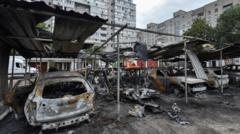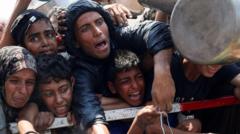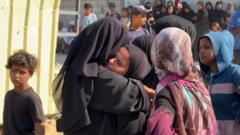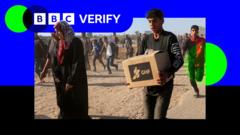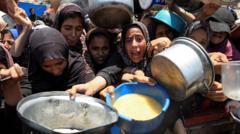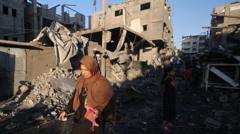Air-dropping aid into Gaza is seen as a desperate measure rather than a viable solution to the region's hunger crisis. Critics argue that this approach cannot address the deeper issues at play and emphasizes the need for a sustained humanitarian operation.
The Limits of Air-Dropped Aid: A Desperate Measure for Gaza's Hunger Crisis
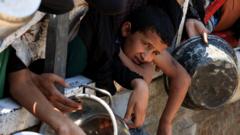
The Limits of Air-Dropped Aid: A Desperate Measure for Gaza's Hunger Crisis
As international pressure mounts on Israel regarding aid access in Gaza, air-dropping assistance is criticized as ineffective amidst the ongoing humanitarian crisis.
In response to the escalating humanitarian crisis in Gaza, Israel has proposed allowing air drops of aid. This gesture seems directed at allies like the UK, France, and Germany, who have vocally criticized Israel for the rising hunger levels among Palestinians. These nations have urged Israel to lift restrictions on aid and facilitate the UN and NGOs' efforts to combat starvation, warning that Israel must adhere to international humanitarian law. However, Israel maintains it imposes no restrictions on aid entry, a stance that several nations and agencies contest.
Historically, air drops have served as a stopgap solution in dire circumstances. Notably in the aftermath of the 1991 Gulf War, the US and UK delivered aid through C-130 aircraft to displaced populations in the Iraqi Kurdistan region. The operation, while necessary, was fraught with dangers; aid parcels often landed far from their intended recipients, occasionally causing injuries or fatalities. Similarly, during the siege of Mostar in Bosnia, supplies were widely scattered and could result in injuries due to falling pallets amidst ongoing conflict.
Current humanitarian professionals regard air drops as a last resort when all other means of access fail, which is not the case for Gaza. Situated just north of the region is Ashdod, a well-equipped port capable of facilitating aid shipments, further supplemented by the Jordanian border as an existing supply line.
Air dropping aid delivers significantly less than a convoy of trucks; many parcels land far from those in dire need, and the competition for dwindling resources among desperate civilians can easily lead to chaos. With reports indicating that nearly a third of Gazans are going days without food, the effectiveness of this approach is called into question. Ultimately, experts stress that only a ceasefire and an unrestricted, long-term aid strategy can truly alleviate the suffering of Gaza's people.

